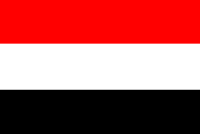Yemen, with a population of approximately 23 million, is a republic whose law provides for presidential election by popular vote from among at least two candidates endorsed by parliament. In 2006 citizens reelected President Ali Abdullah Saleh to another seven-year term in a generally open and competitive election, but one characterized by multiple problems with the voting process and the use of state resources on behalf of the ruling party. Saleh has led the country since 1978. The president appoints the prime minister, who is the head of government. The prime minister, in consultation with the president, selects the Council of Ministers. Although there are a number of parties, President Saleh's General People's Congress (GPC) dominated the government.
Armed conflicts with the Houthi rebels in the North and with elements of the Southern Mobility Movement in southern governorates, as well as with Al-Qaida in the Arabian Peninsula (AQAP) terrorists, affected the government's human rights performance. There were instances in which elements of the security forces acted independently of civilian control.
The main government human rights abuses included severe limitations on citizens' ability to change their government due to, among other factors, corruption, fraudulent voter registration, administrative weakness, and close political-military relationships at high levels. Arbitrary and unlawful killings, politically motivated disappearances, and reports of torture and other physical abuse accompanied the use of excessive force against civilians in internal conflict. Prisons and detention centers were in poor condition, and some private, largely tribal, ones operated without legal authorization or control. Arbitrary arrest and detention, sometimes incommunicado, and denial of fair public trial were widespread. Official impunity was common. The government restricted civil liberties, including freedoms of speech and of the press, including access to the Internet, peaceful assembly, and religious freedom. The judiciary was weak, corrupt, and lacked independence.
Official corruption and lack of government transparency were severe problems. International humanitarian groups estimated more than 300,000 persons were internally displaced as a result of the Saada conflict. Pervasive discrimination against women continued, as did early marriage, child labor, and child trafficking. Discrimination on the basis of religion, sect, and ethnicity was common. Workers' rights were restricted.
If you need more information you can go to this links:
I hope you enjoy my blog! :))


































































